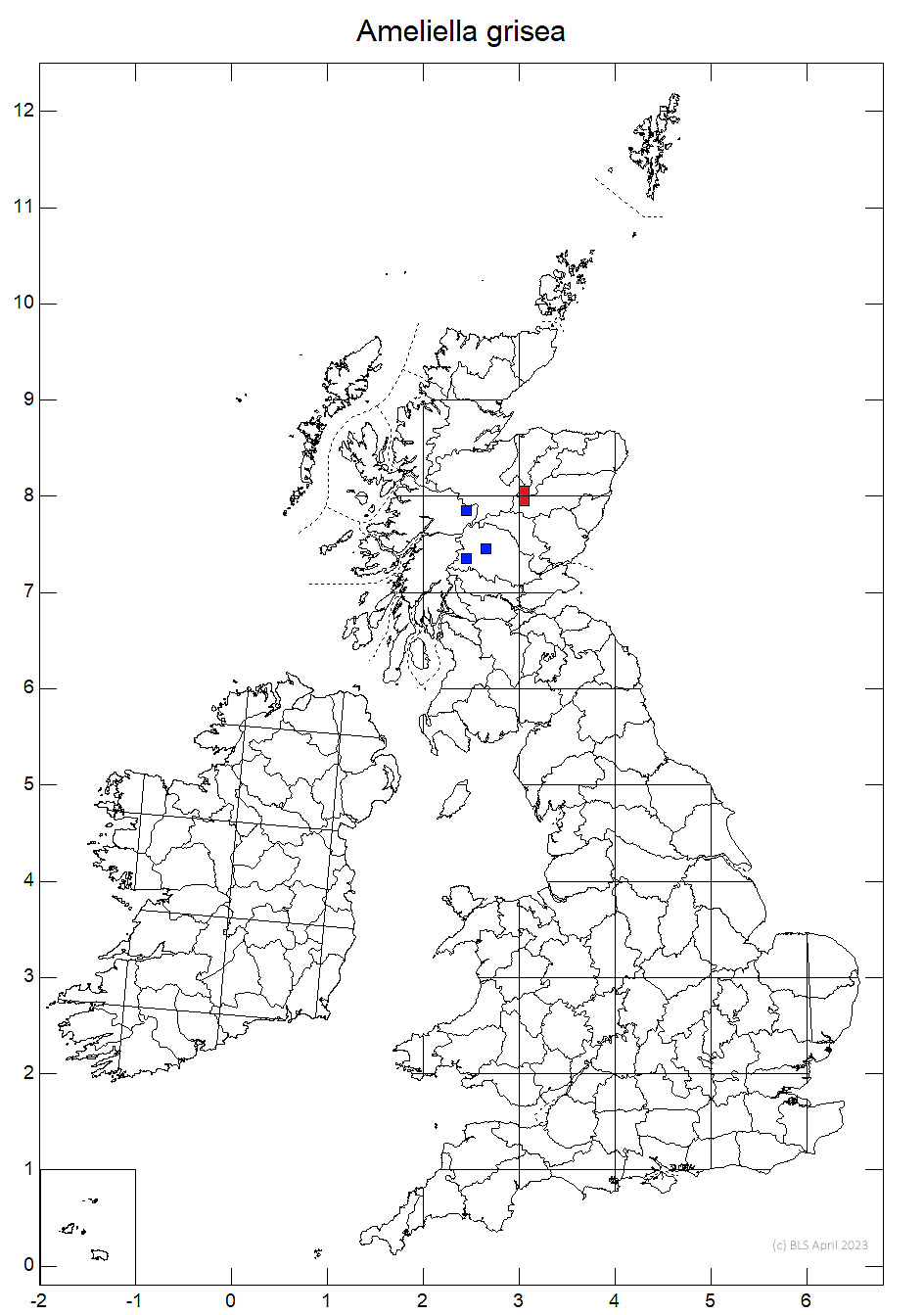Ameliella grisea
A specialist of exposed high montane fell-field habitats, similar to Ameliella andreaeicola, but this has a chestnut to dark brownthallus, while the thallus of A. grisea is grey-white. Potentially under long term threat from climate change.
Similar to A. andreaeicola, but thallus grey-white, matt, thin to verrucose-areolate, areoles 0.15–0.3 (–0.4) mm diam., forming small patches (to 1 cm diam.), usually in montane heaths. Cortex indistinct and outer cells not pigmented, sometimes with a colourless external layer ca 5 μm thick. Apothecia 0.15–0.23 mm diam., with an often paler disc. Ascospores cylindric-ellipsoidal, 10–14 × 5–7 μm. Pycnidia not found.
On the ground in exposed montane heaths in the Scottish Highlands at altitudes of 1000 m or more.

Central Highlands (Ben Lawers range, Creag Meagaidh and Cairngorms).
A specialist of exposed high montane fell-field habitats, so under long term threat from climate change
Britain: Near Threatened
Cannon, P., Malíček, J., Ivanovich, C., Printzen, C., Aptroot, A., Coppins, B., Sanderson, N., Simkin, J. & Yahr, R. (2022). Lecanorales: Lecanoraceae, including the genera Ameliella, Bryonora, Carbonea, Claurouxia, Clauzadeana, Glaucomaria, Japewia, Japewiella, Lecanora, Lecidella, Miriquidica, Myriolecis, Palicella, Protoparmeliopsis, Pyrrhospora and Traponora. Revisions of British and Irish Lichens 25: 1-83.
Text by Neil A Sanderson, based on Cannon et al (2022)
